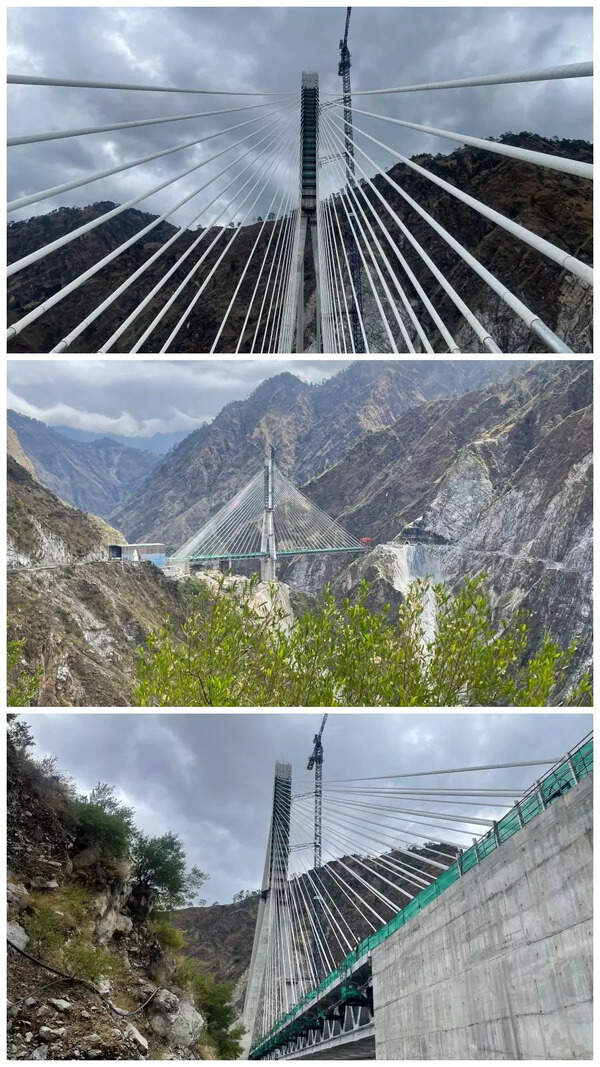- News
- City News
- Hyderabad News
- Amrabad tiger reserve takes giant leap in national ranks in Telangana
Trending Topics
Amrabad tiger reserve takes giant leap in national ranks in Telangana

Focus on strategy helped protect overall wildlife in Amrabad Tiger Reserve
HYDERABAD: A renewed protection strategy with focus on getting local tribal population of Chenchus on-board and improvement of infrastructure has helped Amrabad Tiger Reserve in Telangana take a leap in management effectiveness evaluation (MEE) from 'Good' to 'Very Good' for the 2022 cycle.
The National Tiger Conservation Authority (NTCA) Report-2022 revealed that the Amrabad Tiger Reserve (ATR) scored 78.7% and stood 28th among 51 tiger reserves in the country.
Amrabad Forest divisional officer, Rohit Gopidi, said: "Improvement in protection strategy through deployment of Chenchu tribals and upscaling infrastructure by procurement of boats and vehicles helped us improve the rating. This protection strategy led to reduction in number of poaching cases, tackle forest fires and reduce illegal fishing in Krishna river."
The estimated number of tigers in Amrabad is around 20. However, the NTCA is yet to issue state wise and tiger reserve wise figures.
The NTCA report shows other tiger reserves in the state have also done well in the rankings.The Kawal Tiger Reserve (KTR) retained its 2018 ranking of 'Good' with a score of 74.2%, and stood at 33 position.
The Nagarjunsagar Srisailam Tiger Reserve NSTR in Andhra Pradesh is ranked 24th in the country with a 'Good' score of 82.5%.
Sharing the key initiatives at ATR, Gopidi said, "Reducing the impact of tourism by establishing a centre to recycle plastic waste, and setting up of bio lab to monitor the health of animals and conduct research boosted our rank." He said, "Improvement in community-based activities and creating livelihood opportunities through ecotourism in form of watchers, safari drivers, nature guides and also creation of alternative livelihood opportunities to reduce dependence on forests through skill development in mushroom cultivation, jute bag workshop, and apiculture were taken up."
The forest department also focused on health outcomes of tribes through a health clinic to build trust with local tribes. "Improving the protection strategy through staff, infusion of technology and infrastructure, along with other community-building activities helped enhance trust with local communities, leading to more cooperation," Gopidi said.
The National Tiger Conservation Authority (NTCA) Report-2022 revealed that the Amrabad Tiger Reserve (ATR) scored 78.7% and stood 28th among 51 tiger reserves in the country.
Amrabad Forest divisional officer, Rohit Gopidi, said: "Improvement in protection strategy through deployment of Chenchu tribals and upscaling infrastructure by procurement of boats and vehicles helped us improve the rating. This protection strategy led to reduction in number of poaching cases, tackle forest fires and reduce illegal fishing in Krishna river."
The estimated number of tigers in Amrabad is around 20. However, the NTCA is yet to issue state wise and tiger reserve wise figures.
The NTCA report shows other tiger reserves in the state have also done well in the rankings.The Kawal Tiger Reserve (KTR) retained its 2018 ranking of 'Good' with a score of 74.2%, and stood at 33 position.
The Nagarjunsagar Srisailam Tiger Reserve NSTR in Andhra Pradesh is ranked 24th in the country with a 'Good' score of 82.5%.
Sharing the key initiatives at ATR, Gopidi said, "Reducing the impact of tourism by establishing a centre to recycle plastic waste, and setting up of bio lab to monitor the health of animals and conduct research boosted our rank." He said, "Improvement in community-based activities and creating livelihood opportunities through ecotourism in form of watchers, safari drivers, nature guides and also creation of alternative livelihood opportunities to reduce dependence on forests through skill development in mushroom cultivation, jute bag workshop, and apiculture were taken up."
The forest department also focused on health outcomes of tribes through a health clinic to build trust with local tribes. "Improving the protection strategy through staff, infusion of technology and infrastructure, along with other community-building activities helped enhance trust with local communities, leading to more cooperation," Gopidi said.

About the Author
U Sudhakar ReddySudhakar Reddy Udumula is the Editor (Investigation) at the Times of India, Hyderabad. Following the trail of migration and drought across the rustic landscape of Andhra Pradesh and Telangana, Sudhakar reported extensively on government apathy, divisive politics, systemic gender discrimination, agrarian crisis and the will to survive great odds. His curiosity for peeking behind the curtain triumphed over the criminal agenda of many scamsters in the highest political and corporate circles, making way for breaking stories such as Panama Papers Scam, Telgi Stamp Paper Scam, and many others. His versatility in reporting extended to red corridors of left-wing extremism where the lives of security forces and the locals in Maoist-affected areas were key points of investigation. His knack for detail provided crucial evidence of involvement from overseas in terrorist bombings in Hyderabad.
Start a Conversation
FOLLOW US ON SOCIAL MEDIA
FacebookTwitterInstagramKOO APPYOUTUBE










